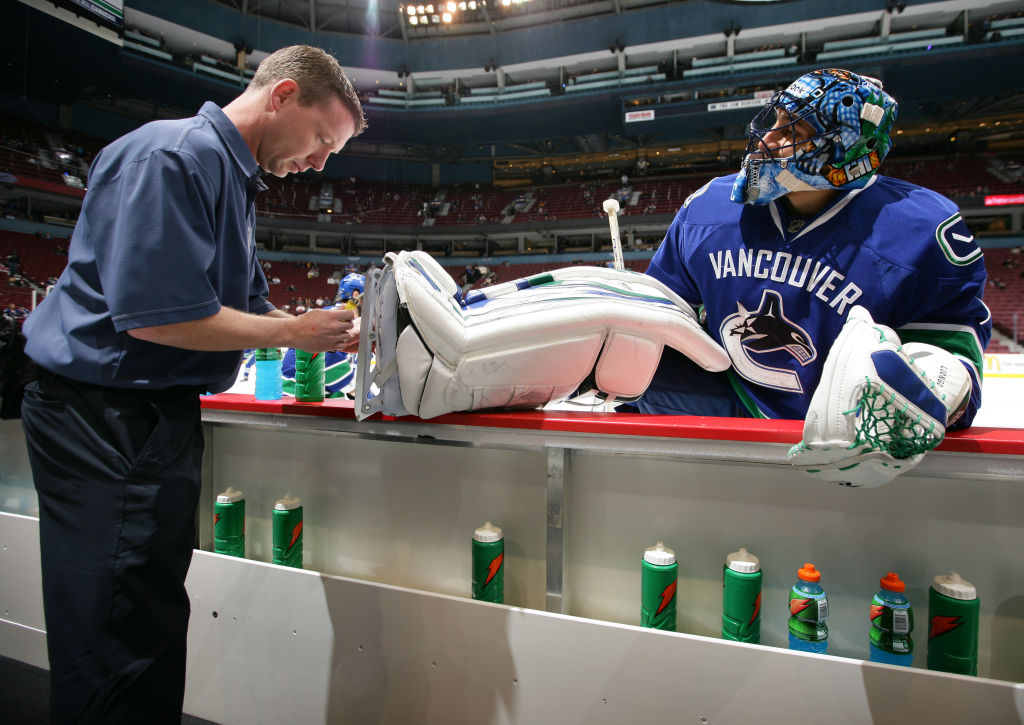NHL
How Much Do NHL Equipment Managers Make?

Granted, working as an NHL equipment manager might not be quite as cool as being an NHL player, but it’s a pretty sweet gig. Not only do you get to be a major part of the NHL, but as long as there isn’t a major equipment failure that costs your team a win, you don’t have to worry about the fans blaming you when things aren’t going well for the team.
Plus, if you’re working with a team that wins the Stanley Cup, you’ll get to spend some time with the iconic trophy, and even have your name engraved on it!
Before you decide that being an NHL equipment manager is your dream job, there are a few things you should know.
How much do NHL managers make?
The most important thing to know before deciding you want to be an NHL equipment manager is whether the pay is good enough for you to earn a living, or if it’s so low that it won’t be anything other than a hobby. If you’re working for the NHL, you’ll make enough to make managing the team’s equipment your main source of income.
The average NHL equipment manager makes an estimated $50,000 annually, plus sometimes the players tip the folks who keep their equipment in good shape. If you aren’t working in the NHL, but in one of the lower leagues, such as the ECHL, it’s likely that you won’t make much more than $25,000. Each level beneath that will have a lower pay scale.
It’s worth noting that different teams will have a different pay scale for their equipment managers. Another factor that impacts your earning is if you’re managing a team of equipment managers or just one a crew of equipment experts who reports to the main manager. Experience will also play a role in your annual salary.
Expect some long days
The salary and thrill of spending a great deal of time around NHL players is great, but working as an NHL equipment manager is also a lot of work. The days are long. Troy Parchman, who works as an equipment manager for the Chicago Blackhawks, starts working around 7 a.m. on game days and continues working until after the game has finished.
That’s far longer than most people dedicate to their jobs. This is also a job that will require a great deal of traveling during the NHL season.
The type of work an equipment manager does will vary depending on if they’re on the road with the team, or at home. The players the equipment manager works with also dictates how busy they are. Some players are hard on equipment and others are mare particular about their equipment than others.
Attention to detail is paramount
NHL players use a great deal of equipment and each piece must be in perfect shape. Not only do equipment managers have to be alert to potential problems with the equipment and see that it’s repaired or replaced right away, they also have to pay attention to the player during the game and anticipate what each one will need and have it ready before it’s requested. Not having something on hand and in perfect shape can be the difference between winning and losing a game.
Becoming an NHL equipment manager
Very few people become NHL equipment managers overnight. Most start out as an equipment manager for a team in a lower league and after gaining some experience, start working their way up the ranks. The trick is to do really good work. An outstanding equipment manager will get noticed and have a solid chance at eventually getting offered an NHL job.
Could a gig as an NHL equipment manager result in you getting into an actual NHL game?
While most equipment managers played hockey, few ever make it into an NHL game, though there are some exceptions. The equipment manager for the Carolina Hurricanes, Jorge Alves, was lucky enough to suit up and play for 7.6 seconds after the ‘Canes backup goalie was sick. It’s a story that proves that sometimes even the wildest dreams come true!











